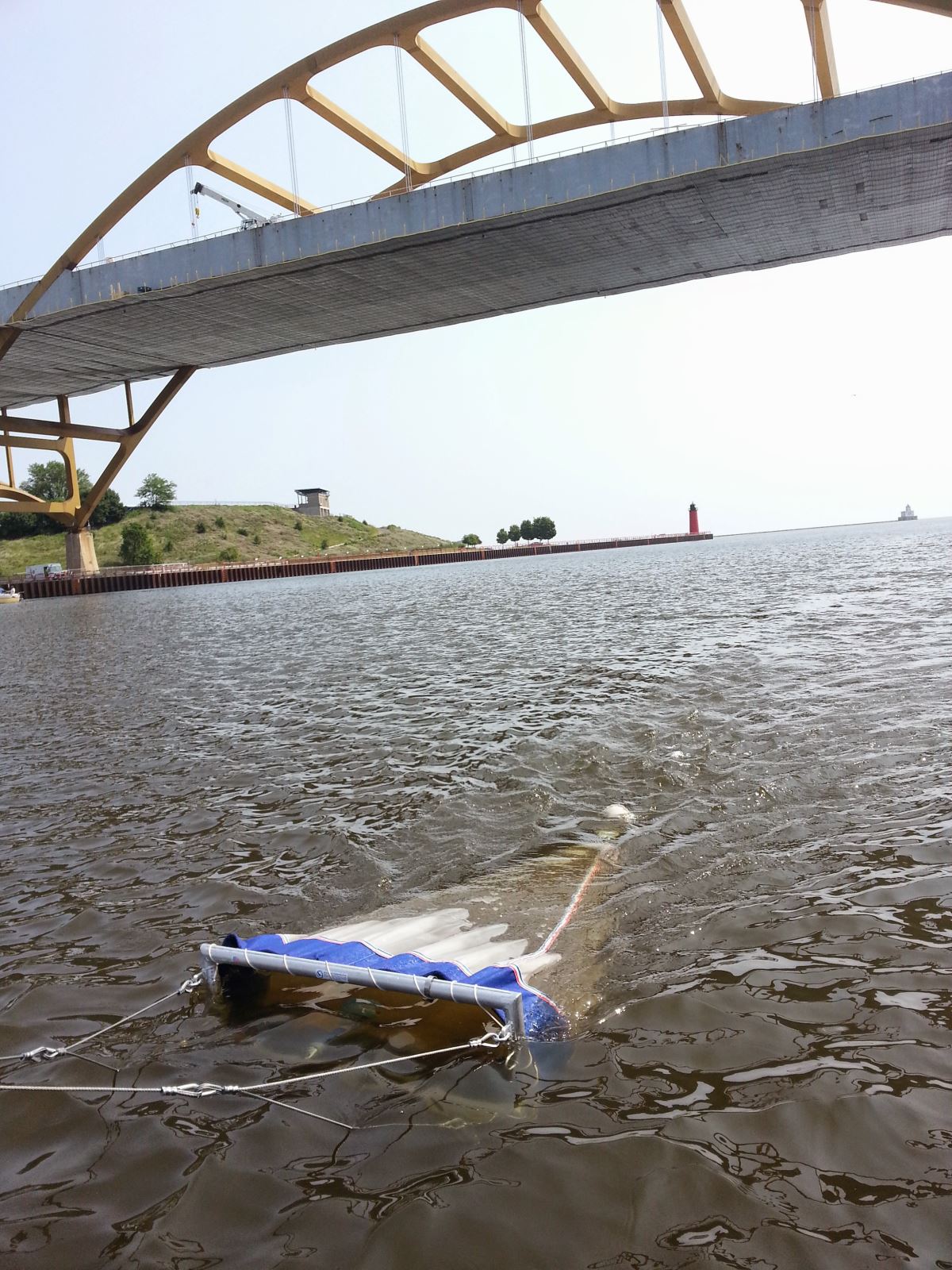
It’s everywhere. In your home, your clothes, your intestines. It’s raining down from the atmosphere for all we know and yet we’re still not sure how great a threat it truly poses.
Here’s what we do know— microplastics are also in the Great Lakes.
Types Of Microplastics
Austin Baldwin is a microplastics expert for the United States Geological Survey, and he explained that there are several types of microplastics. One you’ve probably heard of is the microbeads since they received quite a bit of attention a couple of years ago when studies indicated their unmistakable presence in the Great Lakes.
“That was the first sampling of microplastics in the Great Lakes and one of the first of any fresh water in the U.S,” related Baldwin. “Since then, there’s been an explosion on research of microplastics and fresh water.”
However, Baldwin and other scientists have come to find that microbeads are not nearly as common as plastic fibers. Of all the microplastics, these are the kind they see the most of in the Great Lakes, and it’s these fibers that are being ingested by fish and other aquatic life.
“Basically in every sample and every organism we look at, fibers are the most common type of plastic,” added Baldwin. “They look like fibers that you would expect to come from synthetic clothing like fleece and polyester.”
Source Of Plastic Fibers
This is one of the greatest sources of microplastics that we know of—synthetic clothing. One way clothes shed plastic fibers is through the washing machine. Baldwin mentioned that on average there’s somewhere around 6 million plastic fibers lost in the wash water from just one load of laundry. From there, the water goes to the waste water treatment plant where some fibers get captured and the remainder pass through into rivers which then feed into different lakes.
However, there is still quite a bit of speculation as to where these fibers are coming from because they are quite literally everywhere.
“There’s growing evidence that fibers are basically raining down from the atmosphere,” described Baldwin. “How they’re getting into the atmosphere is still a question, but if you look at your house dust for example, a fair amount of those particles are plastic fibers. The same is true of the outside environment.”
Microplastics In The Great Lakes
In terms of the levels of microplastics in the Great Lakes, Baldwin mentioned that the concentrations increase as you move downstream. So the lowest concentrations are in Lake Superior and the highest are in Ontario. Another reason the amount of microplastics is less in Superior is because there are so few large cities and there isn’t a lot of urbanization on the large rivers feeding Superior.
Then as you move on to Lake Michigan, Huron and Erie, you get some larger and larger cities feeding into those lakes, and with more cities come more plastic waste. Then all those microplastics float out through Lake Ontario. Poor Ontario gets everything from upstream along with what’s feeding directly into it from the rivers.
How Large An Issue?
Baldwin indicated that there’s a lot of research analyzing the significance of the impact of microplastics on aquatic wildlife. As of right now, he feels it’s still up in the air since the majority of the tests they performed have been in lab settings.
“In the real world environment it’s less clear whether the risk of microplastics is greater than all the other risks out there in the environment,” explained Balwin, “because when you’re out in the environment, there are a lot of other contaminants that may be more important than microplastics. We don’t really know yet.”
The Concerns
There are a couple of things people are concerned about when it comes to fish and other aquatic organisms ingesting microplastics. The first is that plastic particles can irritate and clog their digestives systems, and they may not be getting enough nutrients from filling their bellies with microplastics.
The second concern is that plastics are really good at absorbing contaminants floating around in the water. Contaminants don’t generally enjoy floating in the water by themselves, so when a piece of plastic floats by they attach and accumulate on it. Not to mention there’s a myriad of chemicals that go into plastic itself such as flame retardants.
So when a fish eats microplastics, the question is whether the contaminants from the plastic itself and the contaminants that have attached themselves to it get passed into the fish.
“Does the fish absorb those contaminants or do they stay on the plastic and get excreted?” mused Baldwin.
The tests he’s performed have shown various effects on the fish, but he’s still not comfortable answering this question completely due to the controlled environment in the lab setting. According to Baldwin, it remains to be seen.
What Can We Do?
So what is there we can do to stop microplastics from getting into the Great Lakes? Baldwin referred to how congress banned microbeads in 2017, and he felt that was a good start, however minor the source may have been. He feels that educating the public about the issues of microplastics could go a longer way because it puts pressure on companies to come up with solutions.
“The clothing company Patagonia is a good example because it’s putting a fair amount of research into how they can potentially design their fleece and other clothing so that is sheds less,” informed Balwin. “So that’s something.”
It can be difficult for individuals to make an impact on their own, but public concern on a large scale can motivate other companies like Patagonia to be more aware of how they design their clothes and other products so they leave less traces of microplastics.
In the end, public awareness is what could make all the difference.
For More Information:
United States Geological Survey
www.usgs.gov

